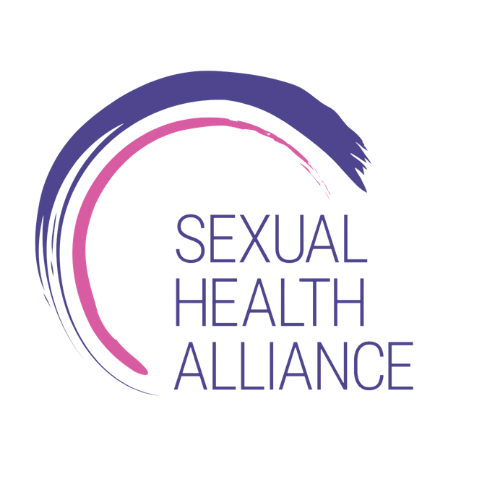Sexual attraction and fantasies vary widely between individuals. As sexual health professionals, it is important to understand that context, identity, cultural norms, and social expectations all shape how people experience and express sexual attraction. This blog highlights findings from a recent large-scale study that examined how gender and sexual orientation influence patterns of attraction and fantasy.
Background on Sexual Attraction and Fantasies
For decades, researchers have explored differences in sexual response between men and women, often focusing on responses to sexual stimuli. These studies have used measures such as pupil dilation, visual attention, reaction time, brain activity, self-reported arousal, and genital responses.
From this body of work, several research have found a consistent pattern:
Men tend to show gender-specific responses—stronger arousal toward their preferred gender and less toward non-preferred genders.
Women often display gender-nonspecific responses, with arousal patterns that are weaker, absent, or sometimes reversed.
The new study expanded on this research, asking whether these differences hold across sexual orientations and how orientation influences attraction and fantasy.
The data
This large-scale study analyzed three datasets that included nearly 57,000 participants. Volunteers were recruited from various online platforms, with attention to diversity in sexual orientation. Participants completed self-reports and indirect measures of sexual attraction and fantasy.
Only cisgender women and men were included who identified as exclusively straight, mostly straight, bisexual or pansexual, mostly gay/lesbian, or exclusively gay/lesbian. A large majority of participants were U.S. citizens (73%), with white participants forming the majority in each sample.
Implicit association tests (IATs)
In addition to self-reported survey questions (e.g., asking participants which gender they are attracted to), the study also used implicit association tests (IATs). IATs have long been used to study implicit beliefs and biases. In these tests, participants quickly categorize stimuli (images, words, or statements) into categories such as “I am sexually attracted” or “I am not sexually attracted.” These tests are useful for identifying gaps between how people consciously report their attractions and the underlying, often unconscious, patterns of desire they may be experiencing.
Are there gender differences in sexual attraction and fantasy?
It turns out, yes.
Across all groups, men showed stronger gender specificity than women. This was true for both self-report and implicit measures.
Men: Consistently stronger attraction and fantasies toward their preferred gender, with lower attraction to non-preferred genders. More likely to identify as exclusively straight or gay.
Women: Reported broader patterns of attraction, including more fantasies and attraction toward non-preferred genders.
Importantly, these differences were less pronounced among lesbian and gay participants, with some measures showing reversed trends.
Attraction
Exclusively gay and lesbian participants reported strong attraction to their preferred gender compared to other participants.
Straight women, particularly those identifying as “mostly straight,” reported more attraction toward non-preferred genders than straight men.
Mostly straight and mostly gay groups showed higher non-preferred gender attraction compared to exclusively identified groups.
Attraction was seen to be fluid among women and those that identified in “mostly” groups.
Sexual fantasies:
Across all orientations, women reported lower frequency of fantasies about their preferred gender and higher frequency about non-preferred genders compared to men.
Women reported fewer fantasies about their preferred gender and more about non-preferred genders compared to men.
Men reported fantasies that were more narrowly focused on their preferred gender.
Predictors of attraction
Self-reported sexual orientation was the strongest predictor of attraction. IAT results were relatively consistent with self-reported measures, however, women were more variable:
Men consistently scored higher on IATs, while patterns among women varied by orientation.
Lesbian also scored high on IATs compared to other groups of women, showing they had strong attraction for their preferred gender.
Straight women groups had small gender-specificity and reversed in the Mostly Straight women group (did not show preference to preferred group).
Cultural and social factors
Sexual attraction and fantasy are influenced by broader social and cultural factors, which are important to understand to contextualize this research and translate to our own practice.
Stimuli: More explicit sexual words were less arousing to straight women.
Labeling: Social pressures affect how individuals label themselves, with research indicating that men are more likely to identify as exclusively straight or gay.
Satisfaction: Lower sexual satisfaction among heterosexual women compared to men may influence patterns of attraction.
Objectification: Sexual objectification of women may affect how people view female sexuality.
Implications for sexual health professionals
Normalize and discuss fantasies: Ask open-ended questions rather than assuming rigid categories.
Explore sociocultural influences: Understand clients’ sexual narratives in context.
Allow space for fluidity: Recognize that gender and sexual orientation exist on spectrums and may stay the same or shift over time.
Consider satisfaction gaps: Gender differences in sexual satisfaction may influence fantasies and attraction.
Integrate into education: Present a nuanced picture of sexual diversity in sex education.
Conclusion
This study reinforces previous findings that men generally show higher gender-specificity than women but also highlights variation across sexual orientations. Sexual attraction and desire are not static. As Dr. Lehmiller’s work reminds us, sexual fantasies and desires are dynamic and are influenced by individual, social and cultural factors. For sexual health professionals, understanding these nuances is key to supporting clients and promoting inclusive, evidence-based education and care.
Resources
Learn about sexual fantasies: Explore the science behind sexual fantasies and discover some of the most common types.
Explore Dr. Lehmiller’s research: Dive into his work on sexual desire and fantasy. He will also be presenting his latest research on modern love and dating at SHA’s Annual Sexological Conference this October, alongside other global experts.
Advance your professional skills: Become a certified sexual health professional through SHA’s comprehensive certification programs and support individuals in their sexual health journeys.
Written by Emma Sell-Goodhand, MPH
Emma is a doctoral student and Global One Health Fellow at North Carolina State University studying adolescent sexual health. She brings prior experience as a Technical Advisor at the World Health Organization.
Want to become an in-demand sexual health professional? Learn more about becoming certified with SHA!




